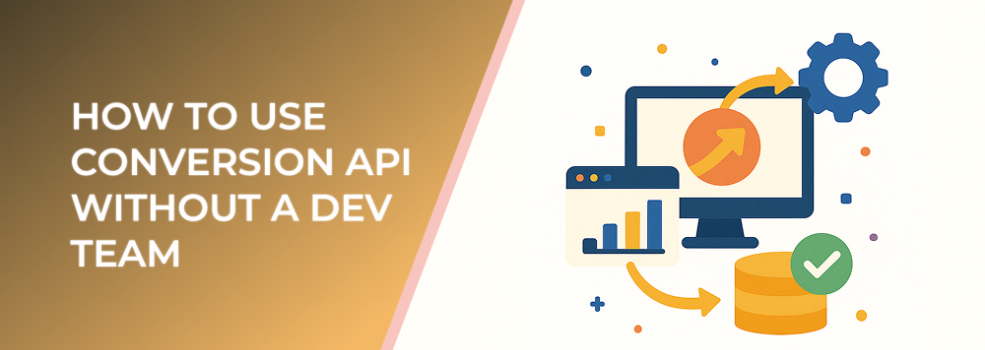Conversion APIs allow marketers to send events directly from a server to advertising platforms. While traditionally implemented by developers, new tools and no-code solutions make it possible to deploy a Conversion API pipeline without writing a single line of code. This is especially valuable as browser restrictions and data loss continue to grow.
Studies show that client-side tracking now loses between 30% and 50% of events due to cookie blocking, ad blockers, and device privacy settings. This is why server-based event forwarding has quickly become a critical part of modern digital advertising.
What a Conversion API Does
A Conversion API (CAPI) transmits key user events—purchases, form submissions, sign-ups, add-to-cart actions—directly from your server to an advertising platform.
Instead of relying on browser scripts to fire events, the data goes through a secure server, helping:
-
Improve tracking accuracy
-
Restore lost conversions
-
Strengthen attribution models
-
Increase optimization signals for campaigns
Brands using a hybrid browser + server setup report up to 25% improvements in event match rates.
Why You Don’t Need a Dev Team Anymore
While traditional server-side implementations require technical skills, the rise of no-code integrations and cloud templates makes it possible for marketers to:
-
Configure events visually
-
Use drag-and-drop routing
-
Manage server containers with prebuilt templates
According to automation usage reports, over 40% of small business advertisers now run CAPI setups entirely without internal developers.
Step-by-Step Guide to Implementing Conversion API Without Technical Expertise
1. Choose a No-Code Server Container
Many marketing platforms offer hosted servers or simple cloud containers designed specifically for event routing. These remove the need for manual setup and allow you to configure everything using a visual dashboard.
Key benefits:
-
No scripts or server maintenance required
-
Ready-made templates for common events
-
Built-in validation tools
2. Connect Your Data Sources
You can send server-side events from:
-
CRM exports
-
Form submissions
-
E‑commerce platforms
-
Marketing automation systems
Most no-code systems let you map these inputs using simple dropdown menus.
3. Configure Standard Events
Set up events such as:
-
Purchase
-
Lead
-
CompleteRegistration
-
AddToCart
-
PageView (optional server-side variant)
Choose the parameters you want to send, such as order value or user email (hashed).
4. Validate Your Events
Visual testing tools allow you to:
-
Test events before publishing
-
Check formatting
-
Identify missing fields
-
Confirm successful delivery
Reports show that proper validation increases event match performance by up to 18%.
5. Monitor Event Quality
Most systems provide dashboards showing:
-
Delivered events
-
Deduplicated events
-
Failed attempts
-
Match quality
Keeping match quality high improves optimization across all campaigns.
Useful Statistics
-
Advertisers implementing CAPI see an average 20–30% boost in attributed conversions.
-
Server-to-platform event delivery has up to 95% success rates when configured correctly.
-
Cost per action drops by an average of 14% when using hybrid server-side tracking.
Tips for Maximizing CAPI Performance
1. Combine Browser and Server Events
Hybrid setups provide the strongest optimization signals.
2. Send Complete Parameter Sets
Include value, currency, event time, email (hashed), and transaction IDs.
3. Keep Events Deduplicated
Use a consistent event ID across both client-side and server-side events.
4. Review Logs Weekly
Make sure events continue to send successfully after platform or website updates.
Conclusion
Running a Conversion API setup without a developer is now fully achievable thanks to modern no-code and low-code tools. With simple configuration, clear dashboards, and prebuilt event templates, marketers can restore lost conversions, improve attribution accuracy, and strengthen campaign optimization.

